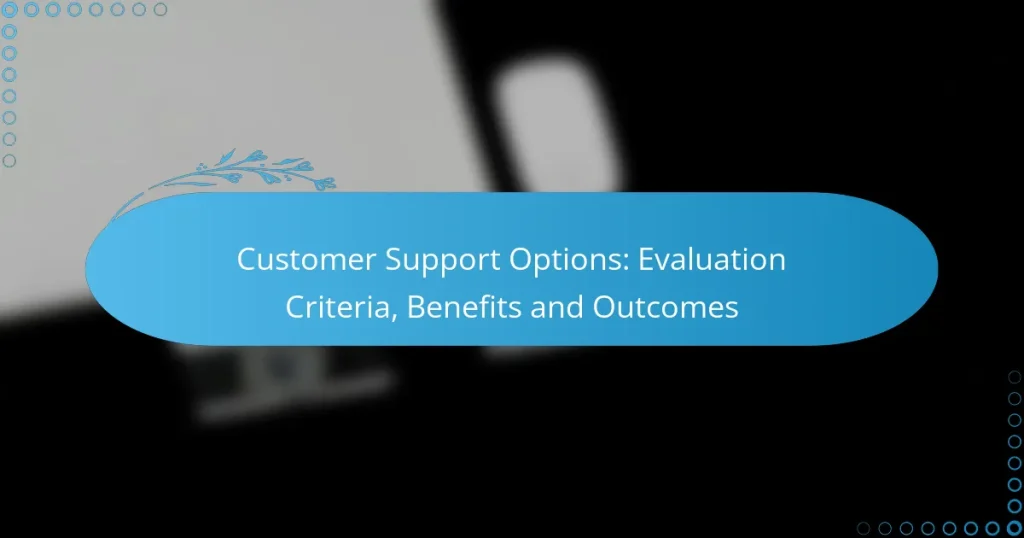In today’s competitive landscape, selecting the right customer support options is crucial for enhancing user experience and satisfaction. Various methods, such as live chat, email, and self-service portals, offer distinct benefits that can significantly influence customer retention. Evaluating these options based on key criteria like response time and integration capabilities can lead to improved service quality and stronger customer relationships.
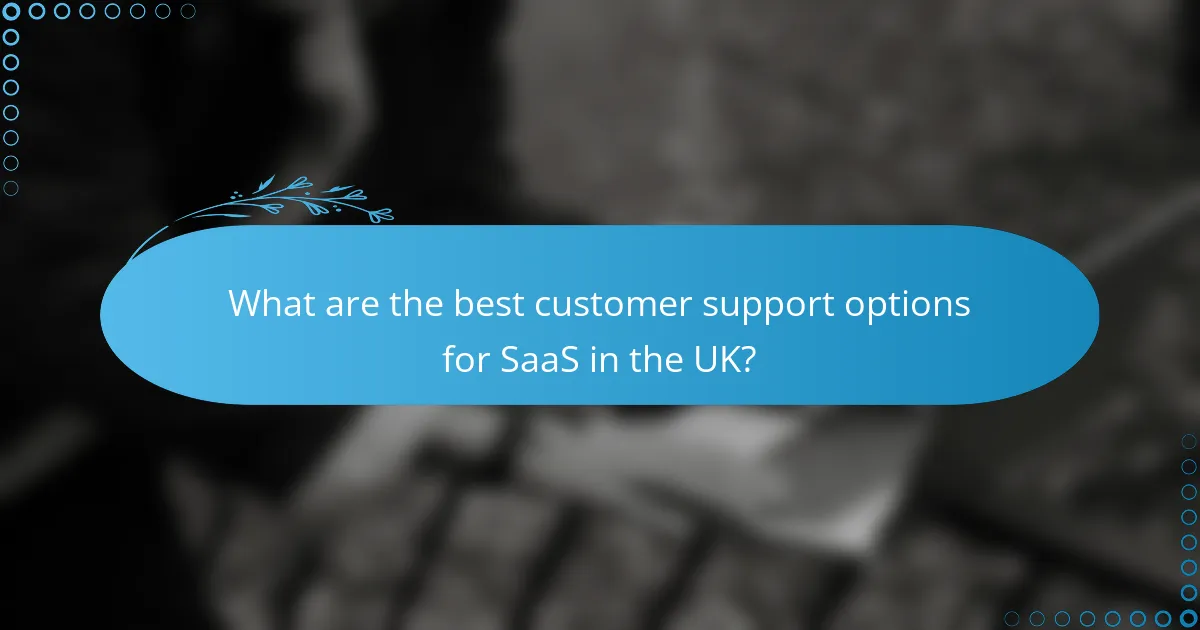
What are the best customer support options for SaaS in the UK?
The best customer support options for SaaS in the UK include live chat, email, phone support, self-service portals, and social media. Each method has its unique benefits and can significantly impact customer satisfaction and retention.
Live chat support
Live chat support allows customers to interact with support agents in real-time through a chat interface on the website. This option is popular for its immediacy, often resulting in quick resolutions to customer inquiries.
Consider implementing live chat during peak hours to maximize availability. Many customers prefer this method for its convenience, as it allows them to multitask while seeking assistance.
Email support
Email support is a traditional yet effective way for customers to reach out for help. It allows for detailed communication and is suitable for complex issues that may require thorough explanations.
Response times can vary, so aim for a turnaround of no more than 24 hours to maintain customer satisfaction. Automated acknowledgment emails can also enhance the customer experience by confirming receipt of their queries.
Phone support
Phone support provides a direct line of communication for customers who prefer speaking with a representative. This method is beneficial for urgent issues that require immediate attention.
Ensure that your support team is well-trained to handle calls efficiently. Offering a dedicated support line during business hours can help manage call volumes and reduce wait times.
Self-service portals
Self-service portals empower customers to find solutions independently through FAQs, knowledge bases, and tutorials. This option can significantly reduce the workload on support teams while providing customers with instant access to information.
Regularly update the content in your self-service portal to keep it relevant and useful. Consider adding video tutorials or interactive guides to enhance user experience.
Social media support
Social media support leverages platforms like Twitter and Facebook to address customer inquiries publicly. This method can enhance brand visibility and demonstrate responsiveness to customer needs.
Monitor your social media channels actively and respond promptly to inquiries or complaints. Establishing a dedicated support account can help streamline this process and manage customer interactions effectively.
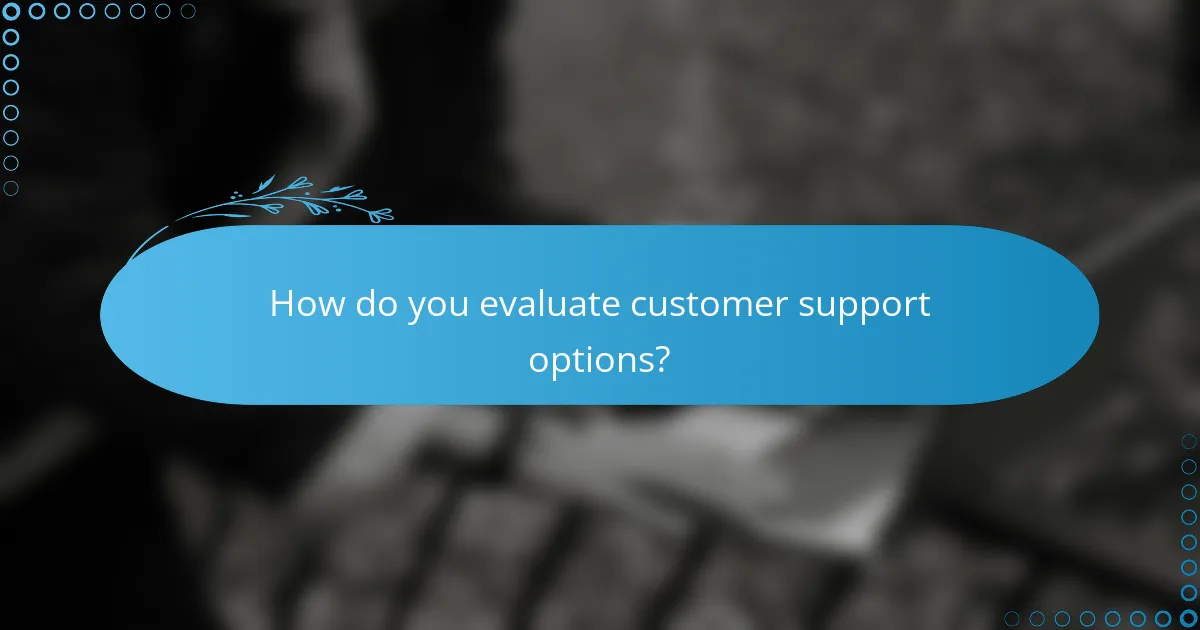
How do you evaluate customer support options?
Evaluating customer support options involves assessing various criteria that directly impact service quality and user experience. Key factors include response time, customer satisfaction, available support channels, and integration capabilities with existing tools.
Response time metrics
Response time metrics are crucial for understanding how quickly a support team can address customer inquiries. Aim for response times in the low tens of minutes for live chat and single-digit hours for email support to ensure customer satisfaction.
When evaluating response times, consider both initial response and resolution times. A good practice is to track these metrics over a period to identify trends and areas for improvement.
Customer satisfaction scores
Customer satisfaction scores (CSAT) provide insight into how well your support meets customer expectations. A typical CSAT score is measured on a scale from 1 to 5, with higher scores indicating better service quality.
Regularly collecting feedback through surveys after support interactions can help gauge customer sentiment. Aim for scores above 80% to indicate a strong performance, and analyze comments for specific areas needing attention.
Support channel availability
Support channel availability refers to the different methods customers can use to reach your support team. Common channels include phone, email, live chat, and social media, with a trend toward omnichannel support for a seamless experience.
Evaluate which channels are most preferred by your customers and ensure they are adequately staffed. Offering 24/7 support through multiple channels can significantly enhance customer satisfaction and accessibility.
Integration with existing tools
Integration with existing tools is essential for streamlining support processes and improving efficiency. Look for customer support solutions that can easily connect with your CRM, ticketing systems, and communication platforms.
Assess the ease of integration and the potential for automation to reduce manual tasks. A well-integrated system can lead to faster resolutions and a more cohesive customer experience, ultimately benefiting your business operations.

What are the benefits of effective customer support?
Effective customer support leads to numerous advantages for businesses, including improved customer satisfaction and increased profitability. By addressing customer needs promptly and efficiently, companies can foster stronger relationships and drive long-term success.
Increased customer retention
Increased customer retention is a direct benefit of effective customer support. When customers receive timely assistance and feel valued, they are more likely to continue doing business with the company. Retaining existing customers is often more cost-effective than acquiring new ones, making this a crucial focus for businesses.
To enhance retention, companies should implement proactive support strategies, such as regular follow-ups and personalized communication. This approach can significantly lower churn rates and create a loyal customer base.
Improved brand loyalty
Improved brand loyalty stems from positive customer experiences with support teams. When customers feel heard and their issues are resolved quickly, they develop a stronger emotional connection to the brand. This loyalty can translate into repeat purchases and positive word-of-mouth referrals.
To cultivate brand loyalty, businesses should invest in training their support staff to be empathetic and knowledgeable. Consistent, high-quality interactions can turn satisfied customers into brand advocates.
Higher customer lifetime value
Higher customer lifetime value (CLV) is achieved through effective customer support by fostering long-term relationships. Satisfied customers are more likely to make additional purchases over time, increasing their overall value to the business. Companies that prioritize support often see a significant boost in CLV.
To maximize CLV, businesses should analyze customer interactions and identify opportunities for upselling or cross-selling. Tailoring offers based on customer preferences can enhance their experience and drive additional revenue.
Enhanced user experience
Enhanced user experience is a critical outcome of effective customer support. When customers receive quick and helpful responses, their overall experience with the product or service improves. This positive interaction can lead to higher satisfaction rates and reduced frustration.
To enhance user experience, companies should utilize multiple support channels, such as live chat, email, and phone support. Offering a seamless experience across these platforms ensures customers can reach out in their preferred manner, further improving satisfaction.
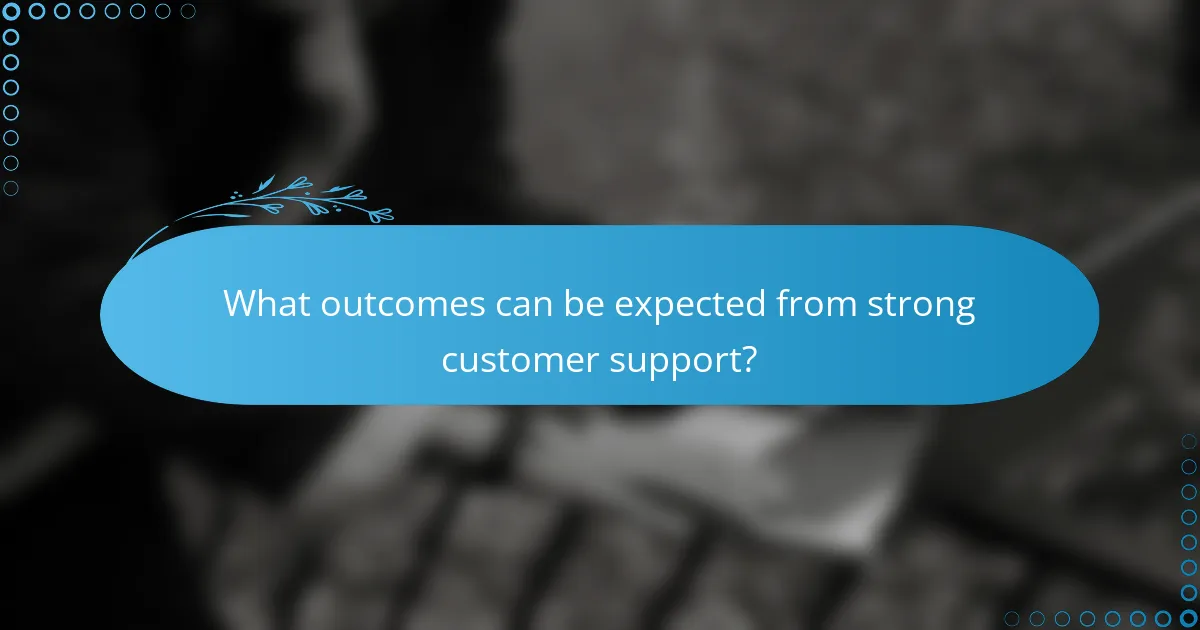
What outcomes can be expected from strong customer support?
Strong customer support leads to improved customer satisfaction, loyalty, and overall business performance. By effectively addressing customer needs and concerns, companies can foster long-term relationships and enhance their reputation in the market.
Reduced churn rates
Effective customer support significantly lowers churn rates by addressing issues before they escalate. When customers feel heard and supported, they are less likely to switch to competitors. Companies can achieve a reduction in churn by implementing proactive support strategies, such as regular follow-ups and personalized communication.
For example, businesses that offer timely resolution of issues often see churn rates drop by a notable percentage. Tracking customer interactions and feedback can help identify pain points and improve service delivery.
Positive customer feedback
Strong customer support often results in positive feedback, which can enhance a company’s reputation. Satisfied customers are more likely to leave favorable reviews and recommend the business to others, driving new customer acquisition. Encouraging customers to share their experiences through surveys or online reviews can provide valuable insights.
Companies should actively monitor feedback channels and respond to customer reviews, both positive and negative. This engagement shows customers that their opinions matter and can lead to further improvements in service quality.
Increased upsell opportunities
When customers receive exceptional support, they are more open to upsell opportunities. A positive support experience builds trust, making customers more receptive to additional products or services. Training support staff to recognize upsell opportunities during interactions can lead to increased sales.
For instance, if a customer expresses satisfaction with a product, support agents can suggest complementary items or upgrades. This approach not only boosts revenue but also enhances the overall customer experience by providing tailored solutions.
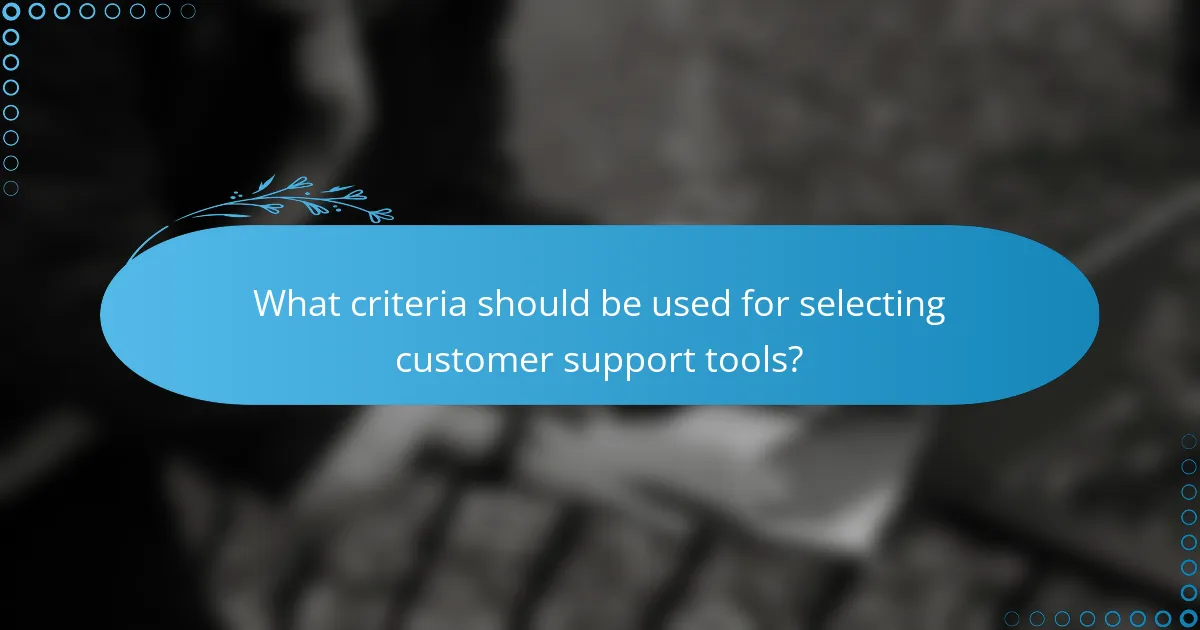
What criteria should be used for selecting customer support tools?
When selecting customer support tools, consider factors such as usability, integration capabilities, scalability, and cost-effectiveness. These criteria help ensure that the tools meet your business needs and enhance the customer experience.
Cost-effectiveness
Cost-effectiveness is a crucial criterion when evaluating customer support tools. It involves assessing the total cost of ownership, including subscription fees, implementation costs, and ongoing maintenance expenses. A tool that appears inexpensive upfront may incur hidden costs that affect overall value.
To determine cost-effectiveness, compare the features offered by different tools against their pricing structures. For instance, some platforms may charge a flat monthly fee, while others might have tiered pricing based on the number of users or features accessed. Aim for a solution that provides the best balance between cost and functionality.
Additionally, consider the potential return on investment (ROI) from improved customer satisfaction and reduced support handling times. Tools that streamline processes and enhance communication can lead to significant savings in the long run. Always conduct a thorough analysis to avoid common pitfalls, such as underestimating the need for training or support during implementation.
